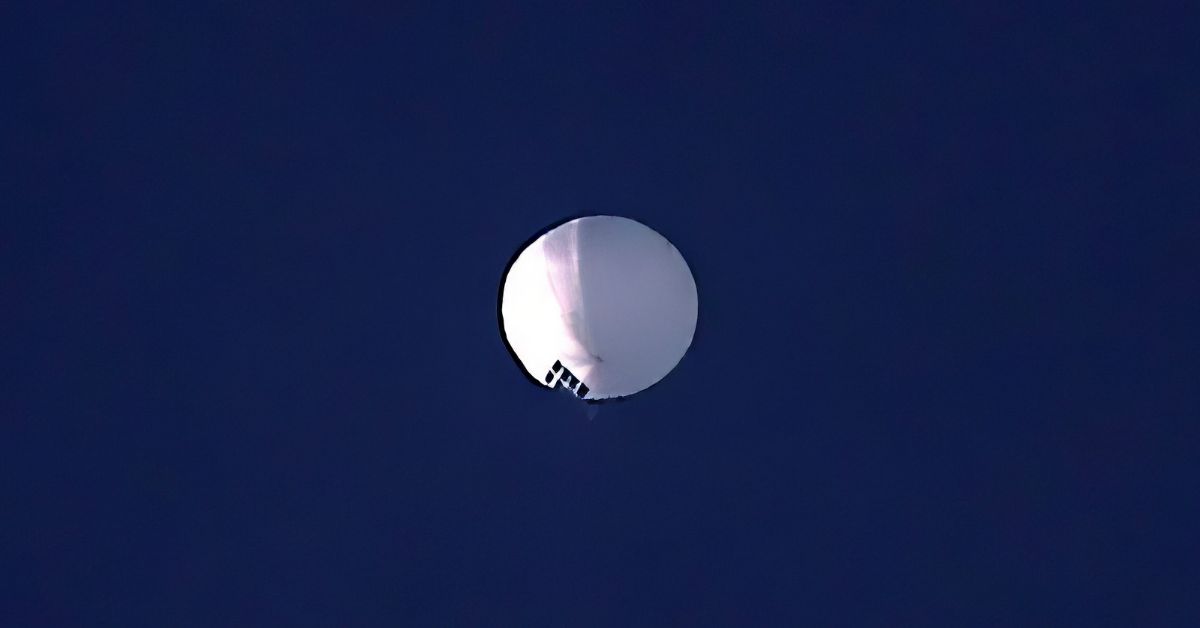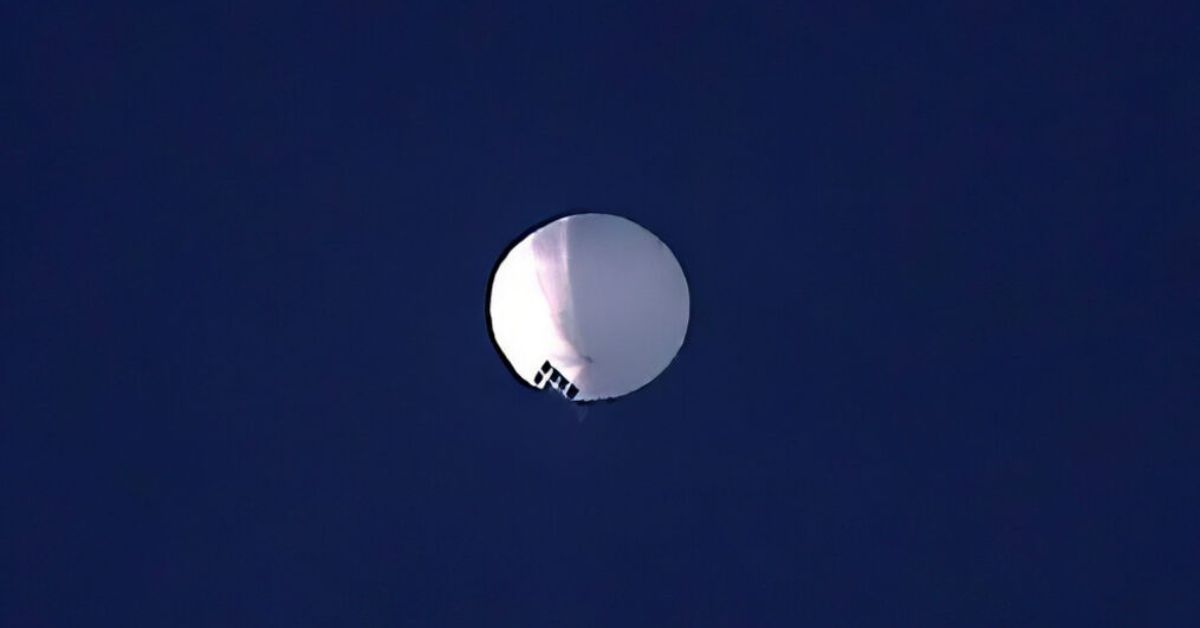China thinks that “near space,” a thin layer of the atmosphere 12 to 60 miles above the Earth’s surface, is the new battlefield for superpowers.
Near space is an area between spaceflight and satellites. It is above the flight paths of most commercial and military jets and below satellites. It is also a place where hypersonic weapons and ballistic missiles cross.
China has been paying close attention to what the US and other countries are doing in the area. Chinese military experts have called the area “a new front for militarization” and “an important field of competition between the world’s military powers.”
China is not only making high-tech ships like solar-powered drones and hypersonic vehicles, but it is also bringing back a decades-old technology called “lighter-than-air vehicles” to use this part of the atmosphere. They include stratospheric airships and high-altitude balloons, like the one that was spotted over the United States on Saturday and shot down.
Even though US officials say that the device was part of a large Chinese surveillance program, China says that the balloon is a civilian research airship. A senior State Department official said Thursday that the balloon “was capable of conducting signals intelligence collection operations” and was part of a fleet that had flown over “more than 40 countries on five continents.” China has strongly denied this claim.
Even though there are still questions about what happened, a look at Chinese state media reports and scientific papers shows that the country is becoming more interested in lighter-than-air vehicles. Chinese military experts have said that these vehicles could be used for a wide range of tasks, such as communication relay, reconnaissance, surveillance, and electronic countermeasures.
Near-space Ambitions
Chinese research on high-altitude balloons dates back to the late 1970s, but over the past 10 years, there has been a renewed focus on using older technology with new hardware as major powers around the world have increased their abilities in the sky.
read an article from 2018 in the PLA Daily, which is the army’s official newspaper (PLA).
The article said that a variety of “near-space flight vehicles” will be very important in future joint combat operations that use both space and the atmosphere of Earth.
“With the rapid development of modern technology, the space for information confrontation is no longer limited to land, sea, and the low altitude. Near space has also become a new battlefield in modern warfare and an important part of the national security system,” As early as 2014, Chinese leader Xi Jinping told the PLA Air Force to “speed up air and space integration and sharpen their offensive and defensive capabilities.” Military experts say “near space” is a key part of this integration.
The article said that a variety of “near-space flight vehicles” will be very important in future joint combat operations that use both space and the atmosphere of Earth. As early as 2014, Chinese leader Xi Jinping told the PLA Air Force to “speed up air and space integration and sharpen their offensive and defensive capabilities.” Military experts say “near space” is a key part of this integration.
Searches on CNKI, China’s largest online academic database, show that Chinese researchers, both military and civilian, have published more than 1,000 papers and reports on “near space.” Many of these papers focus on the development of “near space flight vehicles.” China has also set up a research center under the Chinese Academy of Sciences, a top government think tank, to design and build high-altitude balloons and stratospheric airships, or dirigibles.
Surveillance is one area that people are interested in. China already uses a large network of satellites for advanced long-range surveillance, but Chinese military experts have pointed out the benefits of lighter-than-air vehicles.
Stratospheric airships and high-altitude balloons, unlike moving satellites or planes, “can hover over a fixed location for a long time” and are hard for radar to pick up on, Shi Hong, the executive editor of Shipborne Weapons, wrote in a 2022 article for state media. Shipborne Weapons is a well-known military magazine published by an institute with ties to the PLA.
In a video from the state news agency Xinhua from 2021, a military expert talks about how near-space lighter-than-air vehicles can be used to spy on things and take photos and videos with higher resolution and for a lot less money than satellites.
In the video, an expert from the National University of Defense Technology named Cheng Wanmin talked about how the US, Russia, and Israel have made progress in developing these vehicles. He also said that China has also made “breakthroughs” in this area.
China has made progress in this area, as shown by the reported flight of “Cloud Chaser,” an unmanned airship that is 100 meters (328 feet) long and looks like a dirigible. Wu Zhe, a professor at Beihang University, told the Southern Metropolis Daily newspaper in 2019 that the vehicle had flown around the world at 20,000 meters (65,616 feet) above the Earth, going through Asia, Africa, and North America.
Another scientist on the team told the newspaper that, compared to satellites, stratospheric airships are better for “long-term observation” and can be used for things like warning people about disasters, studying the environment, building wireless networks, and spying from the air.

Get More Latest News:
- The Desantis Administration And College Board Argue About The African American Studies Course
- Mama Cax How Did She Die? Learn Why Today’s Google Doodle Honors Haitian-American Model
Balloon blind Spot
US intelligence officials think that the Chinese balloon seen over the US in recent days is part of a large surveillance program run by the Chinese military. This program uses a fleet of balloons that have flown at least two dozen missions on at least five continents in the past few years, CNN reported on Tuesday.
Beijing said Thursday that the assessment was “likely part of the US’ information and public opinion warfare” against China. It has said that the object found over the US is a civilian one and linked it to “companies,” but it hasn’t said who made the balloons.
Taiwan, which is its own country, and Japan have both said they have seen similar things in the past, but it is not clear if they are related to what happened in the US. On Monday, a US military commander admitted that the US has a “domain awareness gap” that let three other suspected Chinese spy balloons fly over the continental US without being seen during the last administration.
A team from the FBI is trying to find out more about the equipment that was found on the shot-down balloon over the ocean. They want to know what kind of data it could collect and if it could send that data in real time. Mulvaney from CASI said that whether the balloon is called “dual use” or “state-owned,” the information it collected would have gone back to China. China is now getting a different kind of information from the incident.
“At the end of the day responses and (tactics, techniques, and procedures) from the US and other countries on how they react, or fail to – all of that has value to China and the PLA.”
If you liked this article, tell us what you think in the comments section. And don’t forget to check our Twitter for the latest news about entertainment and pop culture.

Leave a Reply